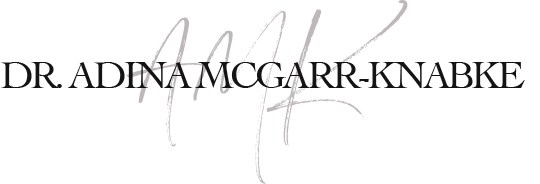
by Dr. Adina McGarr | Oct 24, 2011 | Uncategorized
Did you know that our brains our hard wired to ensure that we will repeat life sustaining activities, such as eating, drinking, procreation, and forming relationships and attachments. What happens in our brains when engaged in any of the above, is that dopamine (among other neurotransmitters) is released, which on an unconscious level informs our brains that the activity is pleasurable, important, and most importantly, must be repeated. The result is that we are drawn automatically, unconsciously toward these things, as our brains equate them with survival.

by Dr. Adina McGarr | Aug 11, 2011 | Uncategorized
One’s basal metabolic rate accounts for 65-70% of calories burned per day. Go to BMI Calculator to determine your BMR (# of calories burned at rest).
From there, you can determine your daily caloric needs based on your activity level with the Harris Benedict equation.
Posted via email from My Santa Barbara Therapy Updates

by Dr. Adina McGarr | Aug 9, 2011 | Uncategorized
Psychotherapy can have benefits and risks. Therapy often involves discussing unpleasant aspects of your life, which may cause uncomfortable feelings like sadness, anger, guilt, frustration, loneliness, and helplessness. It is not unusual to experience a period of increased emotional distress, as you will be exploring and addressing issues that you have previously worked hard to defend against. Successful psychotherapy has been shown to lead to better interpersonal relationships, solutions to specific problems, and an increased ability to regulate and tolerate states of emotional distress.
There are many reasons people choose psychotherapy.
If you find yourself struggling to deal with one of the issues below, you don’t have to suffer in silence and you shouldn’t have to manage alone.
Below are some helpful links:

Depression
Anxiety
Eating Disorders/Body Dysmorphia
Relationship/Interpersonal difficulties
Obsessive Compulsive Behavior
Trauma
Addiction (substance abuse, etc.)
Grief and Loss
Gay, Lesbian, Bisexual
Transgender Issues
Sexual Identity Issues: Gender Identity Disorder
Pervasive Developmental Disorders (Autism, Asperger’s Disorder)
Marital distress
Sexual/Physical Abuse
Stress
Post Traumatic Stress Disorder

by Dr. Adina McGarr | May 5, 2011 | Addiction, Eating Disorders
People who are compulsive eaters show similar activity in the same brain regions as people who are addicted to drugs or alcohol. Addiction to food is a biologically driven process linked with reward centres, and not just another behaviour problem. Forty-eight healthy young American women with body sizes ranging from lean to obese were first tested with the Yale Food Addiction Scale and then monitored with functional magnetic resonance imaging (fMRI). Each woman was first shown a picture of a chocolate milkshake and an image of a glass of water. They were then asked to actually taste the milkshake (milk with four scoops of vanilla ice cream and 2 tablespoons of chocolate syrup) or a solution which tasted like natural saliva (plain water would have activated parts of the brain related to taste).
The researchers chose milkshakes not only because they have a high fat and sugar content (sugar has been most consistently linked with food addiction), but also because they could be consumed relatively smoothly through a small tube in the mouth. In contrast, chewing associated with candy bars or other forms of sweets would have caused the participants to move their head during the scan. One hypothesis was borne out almost immediately: Women with higher food-addiction scores showed more activity in the parts of the brain associated with addiction when exposed to pictures of delectable chocolate milkshakes.
But, unexpectedly, when sampling the actual food, women showed less activation, which could be because the brain just gets flooded all the time, which shuts down some of reward reactors. This could be due to their hope of it being the best thing they ever tasted but when it doesn’t meet expectations, they eat more.
The researchers noted that obesity-related disease is the second leading cause of preventable death. They also explained that further research was necessary to clarify their results, pointing out, for example, that their study did not measure hunger (which could have an impact on the scores) and was confined only to females. Despite some limitations, the researchers felt the specific nerve patterns of brain activation in some subjects suggested addiction, and were especially worried by the finding that mere images of food could start the brain racing.
Advertising is everywhere and exerts a powerful influence over our behaviour. But it can have a positive impact, too, by helping people develop more successful self-control strategies, modulate food cravings and make healthier choices. Another concern was that about 10 percent of people who didn’t necessarily qualify as food addicts also showed some activation in the related brain regions. Even though a small percentage might be full-blown food addicts, some may be having only symptoms like a lot of cravings.
The researchers hope that this study could help the scientific community to accept food addiction as a disease, thereby reduce stigma among heavier people and more effective ways for them to lose weight.
Read more at: Compulsive eaters have food addiction
Archives of General Psychiatry, 2011

by Dr. Adina McGarr | Feb 8, 2011 | Uncategorized

One of the many benefits of therapy includes the identification of self perpetuated, unconscious themes and/or patterns causing the individual pain. Making the unconscious, conscious is the first step toward resolution.

by Dr. Adina McGarr | Sep 28, 2010 | Eating Disorders
Many individuals abuse laxatives in the hopes of controlling or losing weight. This is actually not an effective means for weight loss as laxatives stimulate the large intestine to release its contents, however, food passes first through the stomach and into the small intestine, where most of the calories are absorbed. Hence, the laxative induced bowel movement contains little actual food, fat, or calories. The perceived weight loss is actually the loss of water, minerals, electrolytes, indigestible fiber, and wastes from the colon. As soon as the individual re-hydrates, he/she regains this water weight.
Health consequences of laxative abuse include:
Disturbance in electrolyte and minerals (improper functioning of vital organs, seizures)
Severe Dehydration (tremors, weakness, blurry vision, fainting, kidney damage, death)
Laxative dependency
Internal organ damage
Cathartic Colon Syndrome (anatomic and physiological changes in the colon that occurs with chronic use of stimulant laxatives. Signs and symptoms of cathartic colon include bloating, a feeling of fullness, abdominal pain, and incomplete fecal evacuation).

by Dr. Adina McGarr | Aug 6, 2010 | Eating Disorders
Anorexia is characterized by an intense fear of gaining weight, severe restriction of caloric intake, and the refusal to maintain a minimum normal body weight. People suffering from anorexia experience a severe distortion in their body image. Obsessive thoughts and behaviors are present, such as food rituals, compulsive exercise, and laxative and diuretic abuse. There are two types of anorexia, purging and non-purging type. Anorexia Nervosa has the highest mortality rate of any psychiatric diagnosis.
Some medical complications may include:
• Acid Reflux
• Amenorrhea (loss of menstrual cycle)
• Bone density problems (Osteoporosis)
• Bruising of the skin
• Cardiovascular problems
• Dehydration
• Dental problems
• Digestive difficulties
• Dry skin, hair, and nails and hair loss
• Edema (Swelling of soft tissues resulting from excess water accumulation from laxative or diuretic abuse)
• Electrolyte Imbalances
• Gastrointestinal complaints (cramps, bloating, constipation, diarrhea, incontinence)
• Hypo- and Hyperglycemia (low/high blood sugar)
• Hyponatremia (low sodium)
• Infertility
• Iron-deficiency anemia
• Ketoacidosis (high level of acids build up when the bosy burns fat instead of sugar/carbs)
• Kidney infection and failure
• Lanugo (soft downy hair on face, back, and arms)
• Liver failure
• Low blood pressure or hypotension
• Low body temperature
• Low platelet count
• Malnutrition
• Muscle Atrophy
• Pancreatitis
• Parotid gland swelling
• Seizures
• Sleep problems
• Tearing of esophagus
• Weakness and fatigue

by Dr. Adina McGarr | Aug 6, 2010 | Body Dysmorphic Disorder
Body Dysmorphic Disorder (BDD): When normal appearance concerns are no longer normal.
While similar to behaviors and obsessions seen in eating disorders, BDD is actually classified under obsessive compulsive and related disorders. Individuals diagnosed with body dysmorphic disorder (BDD) are preoccupied with an imagined or slight defect in appearance. This is more than an occasional thought; individuals with BDD think about the flaw(s) excessively and find themselves unable to not think about it. The physical concern is often described as “monstrous, hideous, deformed, or repulsive”. This preoccupation causes clinically significant distress or impairment in social, psychological, and occupational functioning. Individuals with this disorder fear being scrutinized by others and being judged to be unlovable and unworthy.
Flaws in the skin, hair, and face are most common, although “flaws” can appear anywhere in the body. A torturous relationship with mirrors is common, with some individuals unable to leave the mirror, while others avoid it at all costs. Common behaviors seen in persons with BDD include, picking, grooming, camouflaging, comparing, self-surgery, plastic surgery, etc. Some sufferers cannot leave their homes for days or weeks at a time Indiviudals may be obsessed with one flaw, only to add others, or may change their perceived flaws of focus. BDD is thought to occur in about 1-2% of the population, though in studies of students, the percentage has been as high as 13%. 50% of BDD sufferers contemplate suicide

by Dr. Adina McGarr | Jul 6, 2010 | Eating Disorders
Eating disorders are characterized by severe disturbances in eating behavior. Statistics show that 80% of individuals who develop an eating disorder began their dysfunctional relationship with food through dieting. For many individuals, there first attempts at weight loss were positively reinforced by compliments and comments from others. The onset for anorexia and bulimia is usually during late adolescence or young adulthood. 77% usually struggle with their eating disorder between 1-15 years.
Eating disorders are often a conscious or unconscious coping mechanism, however, they have an addictive quality that quickly becomes a severe problem in its own right. Low self-esteem, shame, feelings of unworthiness, lack of control, depression, and anxiety are just a few of the underlying issues that are associated with eating disorders. Eating disorders fall into the following diagnostic categories: Anorexia Nervosa, Bulimia Nervosa, and Eating Disorder NOS. There are other forms of disordered eating, such as Orthorexia and Muscle Dysmorphia, however, they have not been included in the DSM-IV and therefore, do not have a diagnostic code.

by Dr. Adina McGarr | Jun 30, 2010 | Anxiety Disorders
Obsessive Compulsive Disorder (OCD) is characterized by recurrent obsessions and/or compulsions that are incredibly time consuming or cause marked impairment and distress. Individuals with OCD recognize that the obsessions or compulsions are beyond excess and reason. Surprising to many is the fact that either obsessions or compulsions, alone, are sufficient for a diagnosis, however, they commonly occur in tandem. The obsessions and/or compulsions are incredibly time consuming and significantly interfere with an individual’s ability to carry out normal day-today activities.
Obsessions constitute persistent, thoughts, ideas, images, or impulses that feel intrusive, causing significant distress or anxiety. These obsessions feel beyond the individual’s control. Thoughts of contamination, repetitive doubts, need for particular order, sexual imagery, and horrific/aggressive thoughts are among the most common obsessions.
Compulsions are repetitive behaviors, designed to reduce anxiety or distress. Hand washing, checking, counting, hoarding, cleaning, and praying are commonly seen compulsions, in which the individual feels driven and compelled to perform.
American Psychiatric Association: Diagnostic and Statistical Manual of Mental Disorders, Fourth Edition, text Revision. Washington, DC American Psychiatric Association, 2000.












